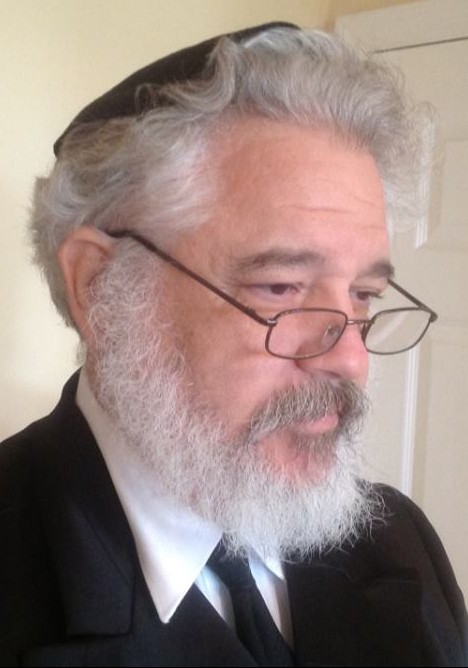Nisuch HaMayim – The Water Libation.
| Author | |
| Date Added |
R. Steve Bernstein
In Yeshua’s time a very important ceremony took place on Succot in the Temple. It was called the Nisuch HaMayim, or the water libation. Culminating in the 7th day of the festival, Hoshana Rabah, in the middle of the night, the Kohayns would collect a small silver pitcher from the altar that was only for this purpose and with great ceremony would march from the Temple Mount down into the city of David to the of Shiloam. The people would line the path of this great parade, bearing torches and singing and dancing and playing musical instruments. The Kohayns would fill the pitcher with water from the pool. And then singing and dancing, the parade would proceed back up through the city of David, to the altar in the Temple. The Kohayns would arrive at dawn and ascend the altar. In one corner of the altar sat a silver cup, and the designated Kohayn would then, in front of the massive crowd, pour the water from the pitcher taken from the pool of Shiloam into the silver cup, with great rejoicing singing, and dancing of the crowd that had gathered in the Temple courtyard. Four great lamps with 4 bowls of oil each, 15 feet high, were erected in the Temple courtyard to illuminate the ceremony. This was the most joyous day of the year. Descriptions of the Water Libation are contained in the Mishna Succot Ch. 5.
This is the backdrop for the famous scene in John 7. Verse 37 tells us: 37 Now on the last day of the festival, Hoshana Rabbah, Yeshua stood and cried out, "If anyone is thirsty, let him keep coming to me and drinking!” CJB. The courtyard of the temple was filled with joyous worshipers as Yeshua made this announcement. But, there was more to it than that.
Nowhere in Torah is there a single commandment regarding the Water Libation. It was the only way to fulfill several commandments in context with each other. The Pharisees understood this; the Sadducees did not accept it. It is important to understand that the crowd in the Temple courtyard was predominantly, if not exclusively, Pharisees. In declaring Himself to be the source of water for the Water Libation, Yeshua was, in fact, declaring himself to be the Messiah. And, He was declaring it to the Pharisaic community.
The water libation ceremony was no stranger to political implication. Some 100 years earlier, the corrupt Hasmonean king and high priest, Alexander Yannai (Janneas,) brought political infighting to a head during the Water Libation. Alexander Yannai was not only King and high priest, he was also the head Sadducee of the day. Even then, the Sadducees objected to the Water Libation ceremony. Most of the people followed Pharisaic doctrine and rejoiced in the Water Libation ceremony. So, Alexander Yannai, in order to show his objection to the Water Libation ceremony, when he mounted the altar with the silver pitcher containing the water from the pool of Shiloam, instead of pouring the water into the silver cup, he poured it on his feet! The symbolism was not lost on the crowd in the Temple that day. Thousands were enraged, and since it was the 7th day of Succot, they were all carrying Etrogs. The enraged crowd began to throw their Etrogs at Alexander Yannai. They were so angry they broke off chunks of the altar, pelting him with these rocks. Alexander Yannai was almost killed. He called the Temple guard into the courtyard. Since Alexander Yannai was a Sadducees, the Temple guard was loyal to the Sadducees. So the Temple guard began a wholesale slaughter of the people. Some 3000 Pharisees were killed in the Temple courtyard that day.
This history of Alexander Yannai was well known to the people in Yeshua’s time. It is important to note that Yeshua, using this Water Libation ceremony to declare himself Messiah, was doing so in support of the ceremony itself. This was an open declaration of our Messiah of the water libation ceremony itself, and therefore the pharisaic interpretation of Torah. L’Shana Tovah.
.
Sat, November 29 2025
9 Kislev 5786
Today's Calendar
| Shacharit : 11:00am |
| Havdalah : 6:24pm |
This week's Torah portion is Parshat Vayetzei
| Shabbat, Nov 29 |
Candle Lighting
| Shabbat, Nov 29, 5:16pm |
Havdalah
| Motzei Shabbat, Nov 29, 6:24pm |
SERVICES & STUDIES
Adult Education Class - Shabbat 9:45am
Shabbat Service - 11:15am
Schul Events
Community Events

Rabbi Doctor Steven Bernstein zt"l
Members & Guests
We are so very grateful to Villas Wesleyan Church for opening their doors to us so we can continue having services while looking for our own building.
We need to be excellent guests and this takes every one of us to accomplish, so here are some gentle reminders:
We will have kiddish lunch / nosh as usual – watch for posted signs for where to set food
Bring your own coffee
Nursery facilities are available plus there’s a changing table in the lady’s restroom – whoever uses them is responsible for pick up, disinfecting, and removing trash
Everyone needs to clean up after themselves and their children
We need helpers for break down (move furniture back into position, wipe down surfaces, take out trash)
MANY HANDS MAKE LIGHT WORK! THANK YOU
- Home |
- Map & Address |
- Donate
Privacy Settings | Privacy Policy | Member Terms
©2025 All rights reserved. Find out more about ShulCloud
